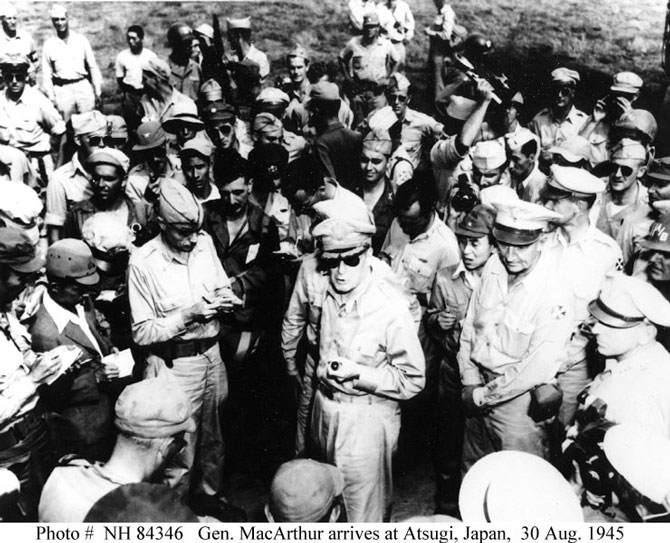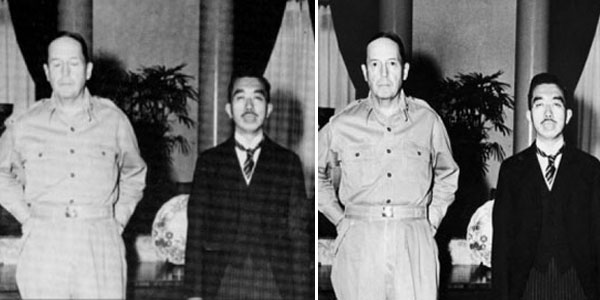Many Japanese were extremely offended by this picture because of how casual MacArthur is looking and standing next to the Japanese Emperor, who was supposed to be a god.
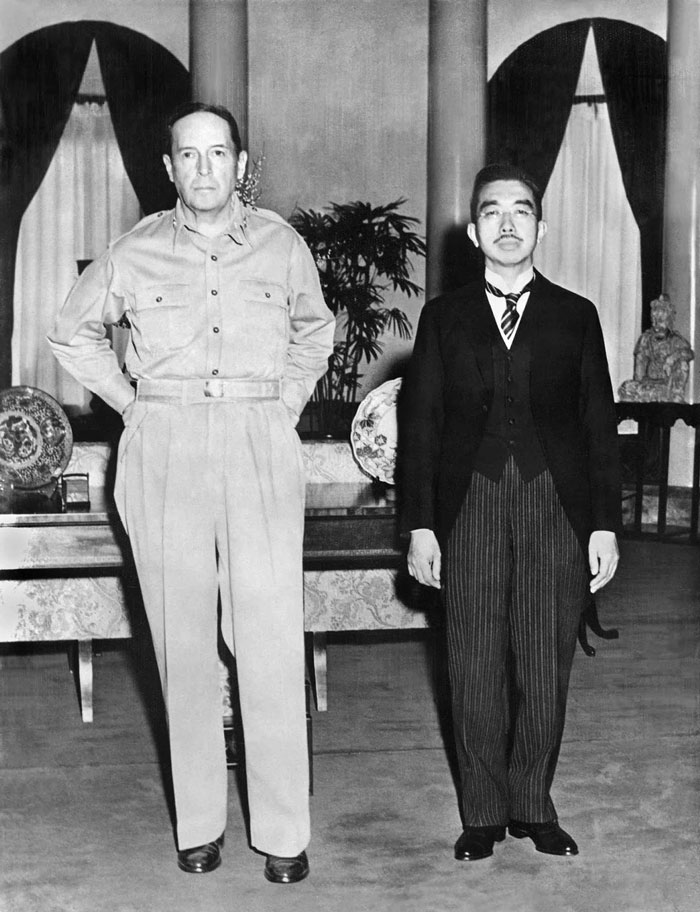
Photo credit: Gaetano Faillace
The Emperor was a living god to the Japanese people, and MacArthur found that ruling via the Emperor made his job in running Japan much easier than it otherwise would have been.
After the Japanese surrender in 1945, the Americans took on the task of occupying Japan and reforming the militaristic nation into a modern country that would never again threaten its neighbors. On August 29, 1945, Gen. MacArthur was ordered to exercise authority through the Japanese government machinery, including the Emperor Hirohito.
Unlike in Germany, where the Allies had in May 1945 abolished the German state, the Americans chose to allow the Japanese state to continue to exist, albeit under their ultimate control. Unlike Germany, there was a certain partnership between the occupiers and the occupied as MacArthur decided to rule Japan via the Emperor and the most of the rest of the Japanese elite.
Tokyo after the Allied firebombing of March 1945
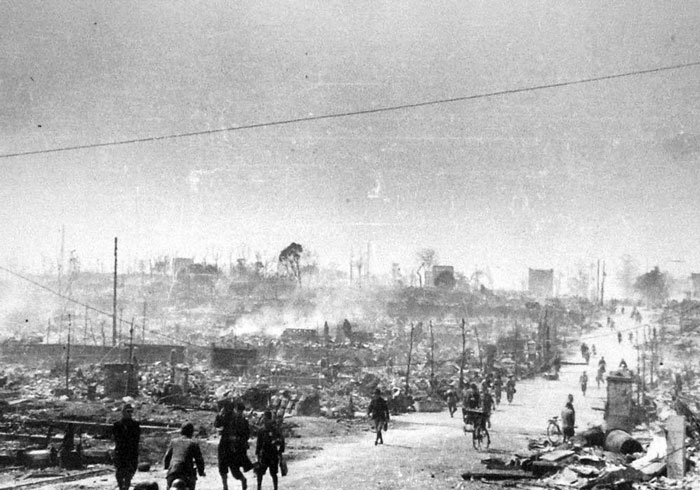
Aboard the USS Missouri in Tokyo Bay, Japan formally surrenders to the Allies, bringing an end to World War II. 10 days later, the Allies issued the Potsdam Declaration, demanding the “unconditional surrender of all the Japanese armed forces.”
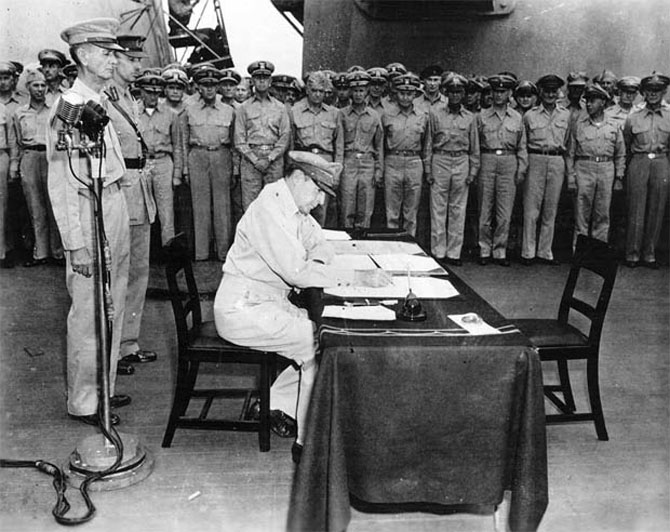
The Postdam Declaration which outlined and called for Japan’s unconditional surrender was officially achieved by August 1945
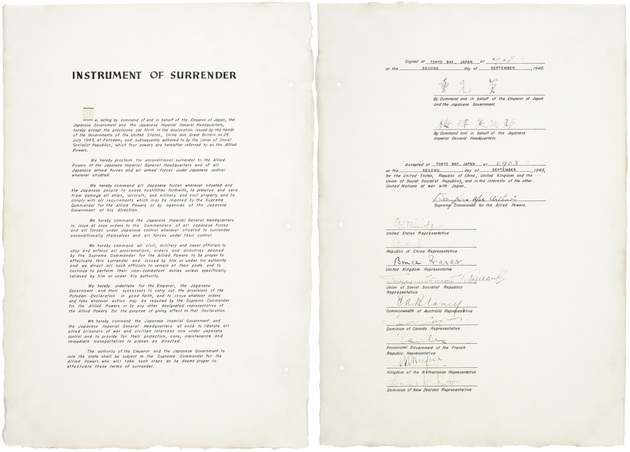
On September 27, 1945, Emperor Hirohito paid a visit to Gen. Douglas MacArthur at the United States Embassy in Tokyo. Arriving at 10:00 AM in his custom-made Rolls Royce the Emperor and his entourage of Imperial guards and advisers were greeted by American officials Faubion Bowers and Bonner Fellers.
The Americans saluted the Emperor and he first bowed to them, then shook their hands. Bowers took the Emperor’s top hat that seemed to alarm Hirohito who as the God Emperor of the Japanese people was not used to be people taking things from him.
As the American officer was taking the hat, Gen. MacArthur burst into the room: “…in that stentorian voice of burnished gold that thrilled everyone who heard it: You are very, very welcome, Sir”. It was the first time Bowers had ever heard the general say ‘Sir’ to anyone. The supreme commander reached out to clasp the Emperor’s hand, and the emperor simultaneously bowed so deeply that the handshake ended up taking place above his head.
In The Man Who Saved Kabuki, Shin Okamoto wrote:
“MacArthur greeted the emperor at the entrance to the reception room, shaking his hand and saying, ‘You are very, very welcome sir.’ The emperor kept bowing lower and lower until MacArthur found himself shaking hands with him over the emperor’s head. Only the emperor, MacArthur and Okamura, the interpreter went into the reception room. Then the door to the reception room was opened and Lt. Gaetano Faillace, of the military camera corps, took a now famous photograph of the emperor and MacArthur from outside the room.”
Gen. MacArthur took Hirohito into a private room with just the Imperial translator, Okumura Katsuzo. The Supreme Commander and the Emperor, through his translator, spent 40 minutes together and swore to keep the contents of their conversation secret. Although over the years some details leaked out.
According to the Americans, Emperor Hirohito offered to take responsibility for the war, unaware that MacArthur, over the objections of Stalin and the British, had removed his name from the list of war criminals, fearing guerrilla actions if he were to stand trial. This is contrasted by the Japanese.
30 years after the meeting, the Imperial translator, Okumura Katsuzo, released his memoirs that claimed that MacArthur was “a fawning courtier awed by his proximity to ‘You Majesty’ and extraordinarily solicitous in his comments”.
In all three photos were taken. In one Supreme commander’s eyes were closed and the Emperor’s mouth gaping open, Hirohito’s gaping open also ruined the second. The third is the one that was published.
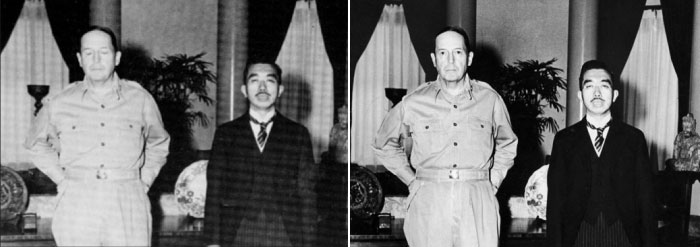
The impact on the Japanese public was electric as the Japanese people for the first time saw the Emperor as a mere man overshadowed by the much taller MacArthur instead of the living god he had always been portrayed as.
Up to 1945, the Emperor had been a remote, mysterious figure to his people, rarely seen in public and always silent, whose photos were always taken from a certain angle to make him look taller and more impressive than he really was. No Japanese photographer would had taken such a photo of the Emperor being overshadowed by MacArthur.
The Japanese government immediately banned the photo of the Emperor with MacArthur under the grounds that it damaged the imperial mystique, but MacArthur rescinded the ban and ordered all of the Japanese newspapers to print it. The photo was intended as a message to the Emperor about who was going to be the senior partner in their relationship.
